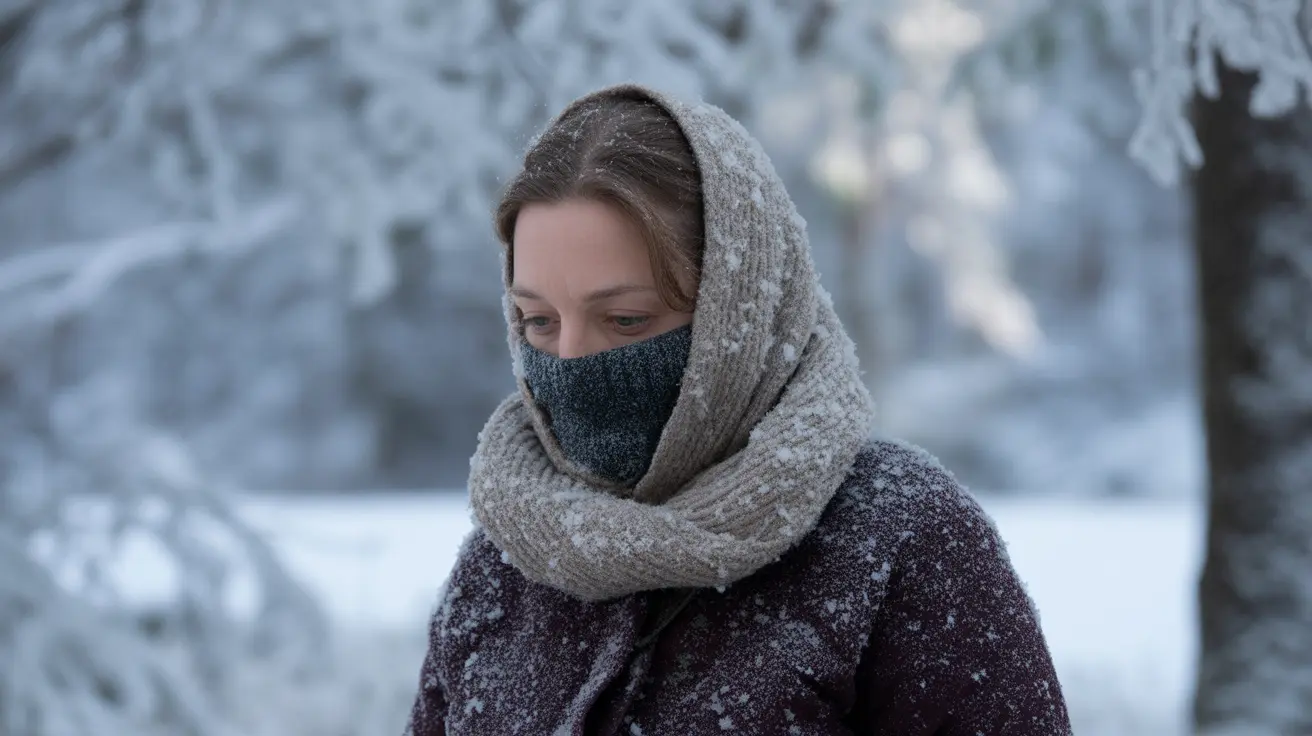Cold air can be a significant trigger for many people with asthma, leading to uncomfortable and potentially dangerous breathing difficulties. Understanding how cold weather affects asthma symptoms and knowing the right treatment approaches can help you manage this condition effectively throughout the winter months.
If you experience wheezing, coughing, or shortness of breath when exposed to cold air, you're not alone. This guide will help you understand why cold air triggers asthma and provide practical solutions for prevention and treatment.
How Cold Air Affects Your Airways
When you breathe in cold air, several changes occur in your respiratory system that can trigger asthma symptoms. Your airways respond to the cold temperature by tightening and producing excess mucus, making breathing more difficult. Additionally, cold air tends to be drier, which can irritate sensitive airway tissues and increase inflammation.
- Bronchial constriction
- Increased mucus production
- Inflammation of airway tissues
- Difficulty breathing
- Coughing and wheezing
Prevention Strategies for Cold-Induced Asthma
Taking proactive steps to protect yourself from cold air exposure can significantly reduce your risk of asthma symptoms:
Indoor Prevention
- Maintain consistent indoor temperature
- Use a humidifier to add moisture to dry winter air
- Keep windows closed during extremely cold weather
- Use air filters to remove potential irritants
Outdoor Protection
- Wear a face mask or scarf over your nose and mouth
- Breathe through your nose instead of your mouth
- Warm up gradually before outdoor activities
- Choose indoor exercise options during extreme cold
Treatment Options for Cold Weather Asthma
Effective treatment of cold-induced asthma typically involves a combination of approaches:
Medication Management
- Short-acting bronchodilators for immediate relief
- Long-term control medications
- Preventive inhaler use before cold air exposure
- Anti-inflammatory medications as prescribed
Lifestyle Adjustments
- Gradually acclimatizing to cold temperatures
- Monitoring weather conditions before outdoor activities
- Following an asthma action plan
- Regular check-ups with healthcare providers
Exercise Considerations in Cold Weather
While cold air can make exercise challenging for people with asthma, staying active is important. The key is to exercise safely by:
- Warming up thoroughly before activity
- Using prescribed medications preventively
- Choosing appropriate activities and intensity levels
- Having rescue medication readily available
- Monitoring symptoms during exercise
Frequently Asked Questions
What causes cold air to trigger asthma symptoms and how does it affect my airways?
Cold air triggers asthma by causing airways to constrict and produce excess mucus. The dry nature of cold air also irritates airway tissues, leading to inflammation and increased asthma symptoms.
How can I prevent or reduce asthma attacks caused by cold, dry air?
Prevent cold-induced asthma attacks by wearing a face covering outdoors, breathing through your nose, using a humidifier indoors, and avoiding prolonged exposure to cold air when possible.
What treatments are recommended for managing cold-induced asthma symptoms?
Recommended treatments include using prescribed inhalers (both preventive and rescue), following a comprehensive asthma action plan, and taking additional medications as directed by your healthcare provider.
Is it safe to exercise outdoors in cold weather if I have asthma, and what precautions can I take?
Exercise in cold weather can be safe with proper precautions, including warming up thoroughly, using preventive medications, wearing appropriate face protection, and monitoring symptoms closely.
How do inhalers and medications help control cold weather asthma and when should I use them?
Inhalers help by relaxing airway muscles and reducing inflammation. Use preventive inhalers as prescribed daily, and carry rescue inhalers for immediate symptom relief. Take preventive medication 15-30 minutes before cold air exposure.




